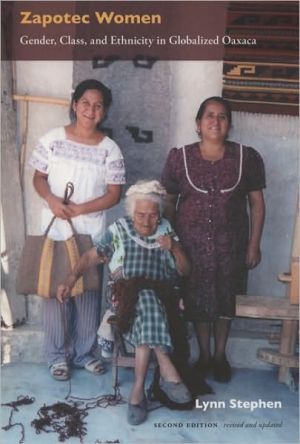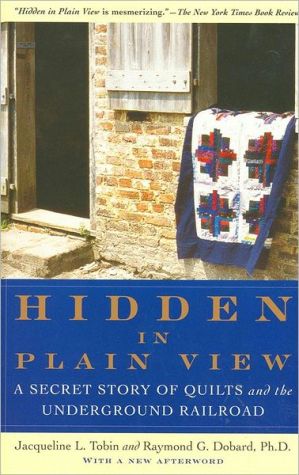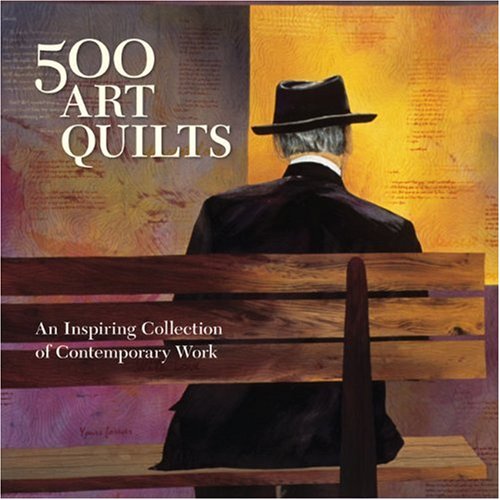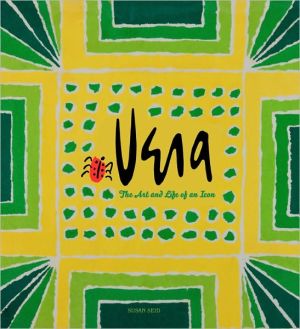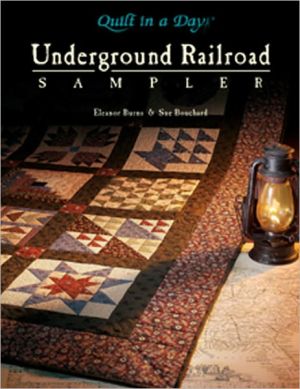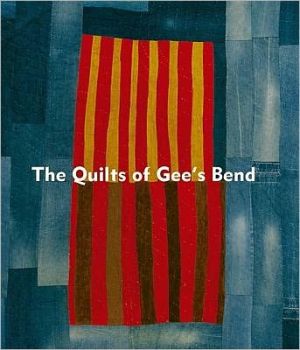Zapotec Women: Gender, Class, and Ethnicity in Globalized Oaxaca
In this extensively revised and updated second edition of her classic ethnography, Lynn Stephen explores the intersection of gender, class, and indigenous ethnicity in southern Mexico. She provides a detailed study of how the lives of women weavers and merchants in the Zapotec-speaking town of Teotitlán del Valle, Oaxaca, have changed in response to the international demand for Oaxacan textiles. Based on Stephen’s research in Teotitlán during the mid-1980s, in 1990, and between 2001 and 2004,...
Search in google:
A classic study of Zapotec women weavers and their reactions to global capitalism.
Zapotec Women\ Gender, Class, and Ethnicity in Globalized Oaxaca \ \ By LYNN STEPHEN \ Duke University Press\ Copyright © 2005 Duke University Press\ All right reserved.\ ISBN: 978-0-8223-3641-9 \ \ \ \ Chapter One\ Ethnicity and Class in the Changing Lives of Zapotec Women \ We are all united here. This is a very quiet town where no one causes any problems. We aren't like other towns where people are divided. We are all just one community. No one is better than anyone else.-Jorge, age 50\ Of course some women have more status than others. The ones who are older, who have given a lot of fiestas, they are always the most distinguished.-Marina, age 26\ There are some really big merchants here in the community. There are five or six families that make all of the money. So the rest of the families are just workers for these people.-Angela, age 48\ In the course of the twentieth century the economic base of Teotitlán del Valle went from mercantile to commercial capital to full incorporation in a global economy. Within this economy, women and men came to occupy an ever-shifting and globally competitive nicheassociated with the production of folk art, crafts, and high art that required the commoditization of Zapotec ethnicity and put the weavers of Teotitlán in direct competition with other indigenous producers of ethnically identified products. By 2004, a wide range of production arrangements could be found in the community. While it is tempting to label both the relations of textile production and the dynamics of identity formation as parts of one type of system-for example, post-Fordist capitalism, characterized by outsourcing and subcontracting around the world in efforts to find the cheapest and most efficient source of labor, which then subsumes all other aspects of identity-this is not the case. For most of the twentieth century, textile production in Teotitlán involved multiple markets and types of relations of production. Thus it is important to recognize the changing and continued complexity of systems of textile production and the different kinds of labor, kin, ethnic, and gender relationships that crosscut them. As Fran Rothstein observed in respect to rural women workers, "differences need to be the starting point, not the end point of our analyses" (1999, 579).\ Workers in Teotitlán's textile industry employ a variety of strategies and systems of production:\ a. Piecework production for local merchants who resell in other parts of Mexico and the United States.\ b. Increased direct control over production and distribution by businesses in the Southwestern United States that market Zapotec and knockoff textiles from Mexico and around the world (Wood 2000a).\ c. Weaving cooperatives that produce primarily for the tourist market in Oaxaca.\ d. Establishment of households and small businesses in Oaxaca, on the U.S.-Mexico border, and in the United States by independent merchant and producer families struggling to maintain control over family businesses (somewhat similar to the "flexible citizenship" strategies described by Ong 1999; see Wood 2000b).\ e. Subcontracting of weaving in Teotitlán and surrounding communities by several powerful local merchant households, who deal also in a wide range of other folk art and ethnic crafts.\ While U.S. textile designers, importers, and entrepreneurs have been important forces in shaping the relations of work in the age of neoliberalism, kin networks also continue to be crucial in helping people to "access material and cultural resources and labor within and beyond the household," as Teotitecos struggle to improve their lives (see Rothstein 1999, 587).\ As in much of the world, being part of a global economy has reinforced tension between economic stratification and ethnic identity, which has evolved to accommodate Mexico's focus on the self-determination of its indigenous peoples and the search for ways of maintaining cultural difference in an interconnected world. The tension between class differentiation and ethnic identity formation and reformation often works to create differences among women as well as among households. Differences among women must be related to the structural dynamics of economic neoliberalism, which affected women not only in Teotitlán but elsewhere in Mexico as well.\ CULTURE AND THE CONCEPT OF ETHNICITY\ In an ongoing battle to determine the analytical primacy of class or ethnicity as the major motor of social relations in rural communities from the 1960s through the 1980s, both Mexican and U.S. anthropologists often reduced ethnicity to class or class to ethnicity without really looking at the ways in which the two intersected. This strategy reflects a larger problem that emerges in anthropology and other social sciences when a static concept of culture is used to analyze social class formation and transition, usually in the guise of acculturation. When culture is defined as a set of shared values or rules for organizing social life, and thus is assumed to be equally shared by all, understood the same way by all members of the group that "shares" the culture, and passed on intact from one generation to the next, it is unlikely to be used in analyses of change. Culture either becomes derivative, "an attachment of more basic political-economic processes," or becomes "independent of the realities of social class" (Sider 1986, 5). If a more flexible definition is used, culture can be helpful and indeed essential in discussing social and economic change. Sally Engle Merry argues that in more recent years, anthropology has developed a complex way of understanding culture by focusing on its "historical production, its porosity to outside influences and pressures, and its incorporation of competing repertoires of meaning and action" (2003a, 4). Her reading of Jean and John L. Comaroff's Of Revelation and Revolution bolsters her optimistic assessment of the value of the culture concept for understanding rapid change, colonization and decolonization, human rights, and other more contemporary phenomena. She writes:\ Anthropology is now struggling to think of culture in more flexible ways, as unbounded, changing, contested, and as rooted in practices and habits as well as ideas and values. Not only are there always flows of new ideas, perspectives, and practices, but there are also, within any group, contests over meanings and action. Those in power may use claims of cultural authenticity to force their ideas on others. Subordinated groups may seize other cultural arguments to contest those claims-arguments derived either from contradictions within a society or provided by newcomers or those who have traveled elsewhere. Such processes of reformulation, argumentation, and change are fundamental to any social group, although the rate and extent of contestation may vary. (Merry 2003b, 466)\ If culture is not shared and is unbounded, what is it? How does it function and where is it located? The Comaroffs (1992, 21) define culture as "the space of signifying practice, the semantic ground on which human beings seek to construct and represent themselves and others-and hence, society and history." It is located in individual consciousness as well as in the ways historical change promotes new relations of power that are contested, accepted, and taken for granted (Merry 2003b, 466). Thus culture is in everyone's head, but not in all heads in the same way or even necessarily always in the same head in the same way through time. As individual consciousness, interpretations, and ideas change, so can one individual's interpretation of culture. One way to think about culture (as in any kind of group identity formation process such as ethnicity, gender, nationalism) is: What are the key contested areas or questions that appear in a particular site or group of linked sites? In other words, what specific pieces of contested representation are being debated, by whom, and for what purpose?\ Anthropologists' past attempts to define ethnicity or specific ethnic groups have often suffered from some of the same problems as models of culture. All too often ethnic identities were assumed to be constituted in the same way for all who held them and to be identifiable according to a set of objective characteristics. Historically, anthropologists often divided people into discrete units-cultures, tribes, ethnic groups-based on the fact that they spoke a particular language, shared common ceremonies and material artifacts, and lived in similar areas. This time-honored approach was taken up by anthropologists in Mexico in relation to particular ethnic groups as well as by the government census office, where it continues to this day. Multilingualism and migration, among other things, have led most anthropologists to conclude that ethnic groups cannot necessarily be distinguished by objective empirical traits such as the language they speak or the territory they occupy. Instead, ethnicity is seen as a subjective, dynamic concept through which groups of people determine their own distinct identities by creating boundaries between themselves and other groups through interaction (Adams 1988; Barth 1969). The cultural theorist Stuart Hall writes that identities (including ethnicity) are constructed through difference-through the relation to what is not, to what is lacking, to what has been called "the other" or the "constitutive outside." Identities "can function as points of identification and attachment only because of their capacity to exclude, to leave out, to render 'outside,' abjected" (Hall 1996, 5; Butler 1993). The form of unity, of closure that they exhibit is constructed and discursive-and, as the Comaroffs argue, contested.\ While Barth's (1969) discussion of ethnicity is situationalist, in that he views ethnicity as constructed in relation to a particular situation and contingency, his discussion does not directly take on situations of conflict or the larger political context in which ethnicity is asserted. More recent theorists such as Brackette Williams (1989) insist that ethnicity be conceptualized as a category of identity within the political unit of the nation-state. My view coincides with hers: ethnic groups often are competing not only among themselves but also in relation to the state as they seek political recognition, which may bring access to resources. (Velasco Ortiz 2002 offers further discussion of this point.)\ Ethnicity is a concept used by a group of people in particular situations where they are trying to assert their status vis-à-vis another group of people, often for political, economic, or social reasons. A self-chosen ethnic identity is usually based on a claim to historical autonomy and perceived cultural or physical traits that are emphasized as a primary source of identity and recognized internally as well as externally (Stephen and Dow 1990). Ethnic identities are articulated and mobilized not only in response to the need to stake political and economic claims in relation to states, but also in relation to the global economy.\ Steve Stern (1987, 15-16) has pointed out that presumed physical and cultural traits draw social boundaries that may or may not coincide with economic class boundaries. Depending on the context in which a specific ethnic identity is used, by whom, and to what end, ethnicity may be used to link classes together in opposition to a perceived common threat or to reinforce the dominance of one class over another. When mobilized in a global economic context, ethnic identities are linked to both international and national political and economic structures and situations.\ The above discussion is meant to clarify the way in which ethnicity can be understood as an analytical concept, which is distinct from the particular way in which Teotitecos and other groups culturally construct ethnicity for themselves. I argue below that Teotitecos' construction of ethnicity has two dimensions: an ethnic identity for outside consumption, which emphasizes community solidarity and a common claim to being the originators of treadle loom weaving in the Oaxaca Valley, and an internal version of ethnic identity, which, although it emphasizes common language, participation in local social and cultural institutions, and weaving production, also allows the contradictions of class differentiation, age, and gender to slip through in subtle ways. It is here that the key questions and debates of ethnic identity are manifested: What is at the core of local Zapotecness? Who has a claim to it? How do differences of power and prestige that are rooted in economic strength push back at local ideas of respect, kin obligations, and reciprocity? These dimensions are part of the same cultural construction, but demonstrate the ways in which indigenous peoples have consciously built ethnic identities to serve their needs in a variety of contexts.\ Scholars point out that socially constructed categories such as race and ethnicity can become perceived as impassible symbolic boundaries that become fixed and take on the appearance of an autonomous force capable of determining the course of social and economic life (Appadurai 1996, 15; Comaroff and Comaroff 1992, 60; Hall 1988, 2). That is why it is necessary to closely examine their construction through time, the ways they are contested, and how they change. The specific construction of Teotitlán ethnic identity also has important historical and processual aspects. Rather than proposing that the specific content of Teotiteco ethnic identity be characterized as a protective defense of "traditional" local institutions against outside intervention, I try to demonstrate that Teotitecos, particularly merchants, have been actively engaged with the discourses of state officials on "Indian tradition" and "folk art" and for quite some time have incorporated pieces of hegemonic national culture in their own construction of what it means to be from Teotitlán. William Roseberry (1989, 75-76), following Raymond Williams (1977), notes that tradition is selective. People create alternative, oppositional cultural forms out of the dominant culture, as Teotiteco merchants have done with official versions of Mexican "Indian tradition." Because the process of Teotiteco ethnic identity construction takes place within a community that is neither homogeneous nor egalitarian, differentiation that has existed within the community (according to wealth, gender, and relative ritual and economic status) is reflected in the ways in which ethnic identity is formulated and expressed within Teotitlán as well as in the tales told to outsiders (see Wood 2001). As increasing numbers of Teotitecos have migrated to the U.S.-Mexican border, the Los Angeles area, Chicago, and elsewhere, the context in which Teotiteco ethnic identity is displayed and reformulated has also broadened and shifted.\ ETHNICITY, RESISTANCE, AND HEGEMONIES IN THE FORGING OF INDIGENOUS IDENTITIES IN POSTREVOLUTIONARY MEXICO\ A critical discussion of the idea of resistance is also in order here if we are to understand how Teotiteco ethnic identity has been constructed and manifested. As many Gramscian scholars have suggested (see Field 1999, Mallon 1995, R. Williams 1994), resistance does not imply complete isolation from and rejection of the dominant culture. Teotitecos addressed postrevolutionary ideology by emphasizing the creation of a national subject incorporating both Spanish and "Indian" heritage as la raza cósmica (Vasconcelos 1979). Resistance to cultural domination is an incomplete and dialectical project in which ongoing local processes of identity creation along several dimensions (class and gender in particular) produce alternatives to hegemonic ideology precisely because of their local specificity and content. For example, the fact that Teotiteco weavers have continued to produce textiles in an economic system that included reciprocal exchanges of labor and goods, as well as commoditized labor, has affected the way in which they have formulated their identity as indigenous craft producers. They have not simply absorbed outside designations of themselves as weavers unchanged by time, using the technology of their ancestors, but have developed an identity commensurate with their place in both global capitalism and local reciprocal exchange.\ (Continues...)\ \ \ \ \ Excerpted from Zapotec Women by LYNN STEPHEN Copyright © 2005 by Duke University Press . Excerpted by permission.\ All rights reserved. No part of this excerpt may be reproduced or reprinted without permission in writing from the publisher.\ Excerpts are provided by Dial-A-Book Inc. solely for the personal use of visitors to this web site. \ \
Ch. 1Ethnicity and class in the changing lives of Zapotec women15Ch. 2Kinship, gender, and economic globalization46Ch. 3Six women's stories : Julia, Cristina, Angela, Alicia, Imelda, and Isabel63Ch. 4Setting the scene : the Zapotecs of Teotitlan del Valle, Oaxaca92Ch. 5Contested histories : women, men, and the relations of production in Teotitlan, 1920-1950s122Ch. 6Weaving as heritage : folk art, aesthetics, and commercialization of Zapotec textiles152Ch. 7From contract to co-op : gender, commercialization, and neoliberalism in Teotitlan200Ch. 8Changes in the civil-religious hierarchy and their impact on women231Ch. 9Fiesta : the gendered dynamics of ritual participation250Ch. 10Challenging political culture : women's changing political participation in Teotitlan282After words : on speaking and being heard324
\ From the Publisher“After it first appeared, Zapotec Women quickly became a must-read in the fields of gender and Latin American studies, and today it can fairly be regarded as a classic. This thoroughly revised edition is a tour de force. Not content merely to add a few pages at the beginning or end of chapters, Lynn Stephen has rethought several key conceptual frameworks and reconsidered the changes experienced in Teotitlán del Valle over the past twenty years.”— Matthew C. Gutmann, editor of Changing Men and Masculinities in Latin America\ “How wonderful that this second edition of Zapotec Women is available! So well written and blessedly lacking in jargon, it comprehensively explains the evolution of women’s cooperatives in Teotitlán, including their interactions with the Mexican state and NGOs, and the effects of transnational forces like NAFTA and increased migration to the United States.”—Jean Jackson, coeditor of Indigenous Movements, Self-Representation, and the State in Latin America\ “In Zapotec Women, Lynn Stephen presents a complex analysis of stereotypically strong women. She situates women’s independence, forged in daily life, in Zapotec tradition that is framed by state-sponsored images of ‘Mexican Indians’ and market transformations that have regional, national, and international dimensions. Stephen’s compelling analysis illuminates class, ethnic, and gender relations that are unexpected and contingent. She renders these social processes beautifully, leaving the reader with an appreciation of individual lives in the context of global transformation.”—Patricia Zavella, coeditor of Chicana Feminisms: A Critical Reader\ “This book is a light in the darkness. The author is a brilliant weaver who, with great expertise, intertwines the fine threads of gender, class, ethnicity, nationality, age, and art, rendering a magnificent tapestry. A rigorous anthropology of Zapotec women in a socio-historical context, the work also surprises by contemplating the aesthetic component of the sarapes created by the artisans of Teotitlán del Valle, Oaxaca.”—Eli Bartra, editor of Crafting Gender: Women and Folk Art in Latin America and the Caribbean\ \ \
